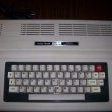-
Posts
24 -
Joined
-
Last visited
Reputation Activity
-
 Kalobok reacted to joekhoobyar in Upgrading Armbian from bullseye to bookworm
Kalobok reacted to joekhoobyar in Upgrading Armbian from bullseye to bookworm
Step 1 - Install the Armbian PGP key and update your APT sources
Install armbian.gpg to /usr/share/keyrings/armbian.gpg (mode 644) You can use a copy from another one of your SBCs, or... ... you can download and install like below (thanks @BrewNinja for the example) touch /usr/share/keyrings/armbian.gpg chmod 644 /usr/share/keyrings/armbian.gpg wget https://apt.armbian.com/armbian.key -O - | gpg --dearmor >/usr/share/keyrings/armbian.gpg
Edit /etc/apt/sources.list Replace all instances of bullseye with bookworm Edit /etc/apt/sources.list.d/armbian.list deb [signed-by=/usr/share/keyrings/armbian.gpg] http://apt.armbian.com bookworm main bookworm-utils bookworm-desktop
Edit any other files in /etc/apt/sources.list.d as appropriate, to replace bullseye with bookworm
Step 2
apt update
Step 3
NOTE - WHEN RUNNING THE BELOW COMMANDS, DO NOT ACCEPT ANY INTERACTIVE PROMPTS FOR CHANGING /etc/initramfs-tools/initramfs.conf
The default is not to accept the changes anyway - but I am noting this here to be extra careful I've checked - the changes may differ from what armbian has in the latest images
apt upgrade --no-new-pkgs apt full-upgrade apt dist-upgrade
-
 Kalobok reacted to BrewNinja in Upgrading Armbian from bullseye to bookworm
Kalobok reacted to BrewNinja in Upgrading Armbian from bullseye to bookworm
Just wanted to say thank you for the instructions, they worked really well. I can add that this is how I added the armbian.gpg to my install:
sudo wget https://apt.armbian.com/armbian.key -O key sudo gpg --dearmor < key | sudo tee /usr/share/keyrings/armbian.gpg > /dev/null sudo chmod go+r /usr/share/keyrings/armbian.gpg
-
 Kalobok reacted to Igor in Armbian with preinstalled Home Assistant supervised
Kalobok reacted to Igor in Armbian with preinstalled Home Assistant supervised
Yes. I have also updated instructions in the 1st post.
-
 Kalobok reacted to Igor in Armbian with preinstalled Home Assistant supervised
Kalobok reacted to Igor in Armbian with preinstalled Home Assistant supervised
Download Armbian with HA (v25.2)
Then boot the image, wait few minutes and login via http://ip_address_of_armbian_running_ha:8123 (official onboarding manual)
Home Assistant Supervised is, more or less, a full blown Home assistant.
Install Home Assistant on any Armbian Bookworm (experimental)
Main difference between HA OS and Armbian with HA is that underlying OS here is clean Armbian Debian Bookworm and there is custom dedicated buildroot OS that is provided for a few single board computers, primarily for Raspberry Pi. We provide HA on a small selection of single board computers, but in theory, its possible to run this on (almost) all that are possible to build.
I am running HA on Odroid N2+ and it works without any problems. I have z-wave network with sensors and switches, air humidifier, Android TV, Android phones, dishwasher, ... Things works flawlessly, much better then few years back when I started with home automation for a first time, with OpenHab. This time it was setup from scratch and in a matter of days, most of devices are in function, playing with automation.
Tested on:
Odroid N2/N2+ Odroid M1 Nanopi R4S Rock 5B Uefi-x86 Orangepi 5 Nanopi M6 Rpi400 Khadas VIM1S Khadas VIM4 (Amlogic vendor kernel trouble, failing / need inspection) Bananapi M2 Pro
Provided for but untested (images you find on board downloads locations, seek them here https://www.armbian.com/download/😞
DIY
Contribute
Support:
The supervised installation method on Armbian is not officially supported by the Home Assistant project. Additionally, installation on hardware that is not officially supported is also outside the scope of support provided by the Armbian team.
You are welcome to report high-level application issues that are reproducible on the official Home Assistant Operating System (HAOS) within the Home Assistant community or here on this forum. For any hardware-related topics, you may use the this forum; however, please be aware that official support from the Armbian team is not guaranteed.
single board computer hardware https://www.armbian.com/bugs home assistant functions https://community.home-assistant.io/
(make sure to bring up only issues that are application related, high level issues, that are likely present in official HAOS software) -
 Kalobok reacted to Igor in Armbian with preinstalled Home Assistant supervised
Kalobok reacted to Igor in Armbian with preinstalled Home Assistant supervised
Today I went and update OS packages on my Odroid N2 running Armbian HA instance. Logs:
I did reboot after this, then update Home Assistant Core via HA web interface to latest version 2024.2.3
All went fine!
-
 Kalobok reacted to MX_Master in Is Mali GPU driver available in Mainline for H3?
Kalobok reacted to MX_Master in Is Mali GPU driver available in Mainline for H3?
Xorg config is standard, by armbian - /etc/X11/xorg.conf.d/01-armbian-defaults.conf
Section "Monitor" Identifier "Monitor0" Option "DPMS" "false" EndSection Section "ServerFlags" Option "BlankTime" "0" Option "StandbyTime" "0" Option "SuspendTime" "0" Option "OffTime" "0" EndSection Section "Device" Identifier "Default Device" Driver "modesetting" Option "AccelMethod" "glamor" EndSection May be this "Device" section is a source of my problem.
-
 Kalobok got a reaction from NicoD in Do you like to see your favorite board supported?
Kalobok got a reaction from NicoD in Do you like to see your favorite board supported?
Hi @yang and @TRS-80,
If it's not too late, I'd like to pick up OrangePi Zero Plus2 H3 as a maintainer.
I have two Plus2 boards with expansion boards, and can to test for releases and troubleshooting.
Don't have much experience in SW development, but have some as Linux basic admin.
As an experiment built an image for "BRANCH=current KERNEL_ONLY=no BUILD_DESKTOP=yes RELEASE=bullseye", all seems to work: http://ix.io/3Qdm.
I like the board and would like to keep it in the game.
-
 Kalobok got a reaction from lanefu in Do you like to see your favorite board supported?
Kalobok got a reaction from lanefu in Do you like to see your favorite board supported?
Hi @yang and @TRS-80,
If it's not too late, I'd like to pick up OrangePi Zero Plus2 H3 as a maintainer.
I have two Plus2 boards with expansion boards, and can to test for releases and troubleshooting.
Don't have much experience in SW development, but have some as Linux basic admin.
As an experiment built an image for "BRANCH=current KERNEL_ONLY=no BUILD_DESKTOP=yes RELEASE=bullseye", all seems to work: http://ix.io/3Qdm.
I like the board and would like to keep it in the game.
-
 Kalobok got a reaction from manuti in Rock Pi S, RK3308 CPU, is it supported by anything?
Kalobok got a reaction from manuti in Rock Pi S, RK3308 CPU, is it supported by anything?
Well, if it's possible, why not to include it? Especially that it's almost 30% increase in frequency. Since the board doesn't tend to overheat, there should be no thermal issues.
Also (and it's quite subjective, I admit), I have an impression that the board is somewhat slow when it has to generate web content for rpimonitor.
PS Tried usb with custom-built kernel - the same result (USB hubs are present but devices are not recognized).
-
 Kalobok got a reaction from TRS-80 in Orange Pi Zero Plus 2: leds disappeared after upgrade
Kalobok got a reaction from TRS-80 in Orange Pi Zero Plus 2: leds disappeared after upgrade
There were several 5.8.16 lines, I've selected the topmost (assuming it's the latest), and the LEDs are back!
Thanks a lot!
-
 Kalobok got a reaction from manuti in Rock Pi S, RK3308 CPU, is it supported by anything?
Kalobok got a reaction from manuti in Rock Pi S, RK3308 CPU, is it supported by anything?
Yes, I'd like to test, please provide me instructions.
-
 Kalobok got a reaction from manuti in Rock Pi S, RK3308 CPU, is it supported by anything?
Kalobok got a reaction from manuti in Rock Pi S, RK3308 CPU, is it supported by anything?
Just checked Armbian_21.02.0-trunk.4_Rockpi-s_buster_current_5.9.11_minimal image.
Wifi works, USB doesn't (lsusb gives no output).
Also, available frequencies are limited to 1008000, while with the legacy kernel max freq is 1296000.
Here's the report:
+BOOT=yes
+VERSION=21.02.0-trunk.4
+KERNEL=5.9.11-rockchip64
+NETWORK=NT
+WIRELESS=yes
+HDMI=NA
+USB=no
+DVFS=NT
+ARMBIANMONITOR=http://ix.io/2G2R
-
 Kalobok reacted to JTI in Orange Pi Plus 2e - Where is 1,6Ghz and SD ?
Kalobok reacted to JTI in Orange Pi Plus 2e - Where is 1,6Ghz and SD ?
I used this information for Booting with eMMC and with or without SD-Card insert
http://forum.armbian.com/index.php/topic/1187-boot-from-emmc-with-blank-sd-in-slot-bpi-m3/?p=9292
I tested this on Orange PC Plus and works fine
- installation Armbian on sd card (first) / boot / update ...
- then nand-sata-install (copy from SD-card to eMMC) and boot from eMMC without SDCARD
- then cp /boot/script.bin /boot/script.bak (for safety)
- then "bin2fex /boot/script.bin /tmp/script.fex" (or to another directory e.g. /root ...)
- then Change sdc_detmode from 3 to 1 in the script.fex - then "fex2bin /tmp/script.fex /boot/script.bin" - then boot systen with e.g. reboot and now the system booting from eMMC with or without SD-Card. I use this to greatly expand the home directory. (System on eMMC and Home (User) on SD-Card) and works fine. jti





